
Ashley Whitlock
Hampshire & IOW Butterflies and Moths

Many of the woods in the Forest of Bere are Privately owned. It is worth finding this out before embarking on a walk in and around some of these magnificent ancient old Oak woodlands.
The Forest of Bere
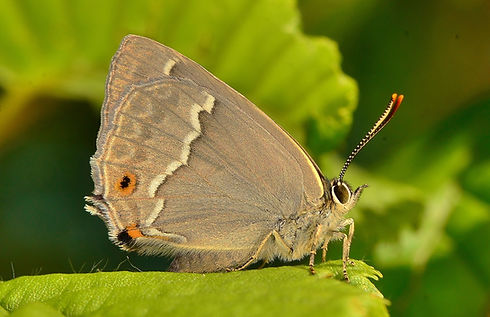
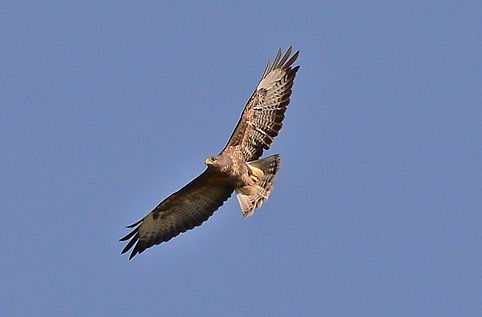
Many of the woods have many butterfly species like the Purple Hairstreak which rarely come down to eye level. Normally flying in and around the crowns of the Oak trees, being arboreal by nature.
Buzzards and Red Kites nest in many of the woodlands and on the fringes of the woodlands mentioned below. The Buzzard is probably Hampshires most common bird of prey
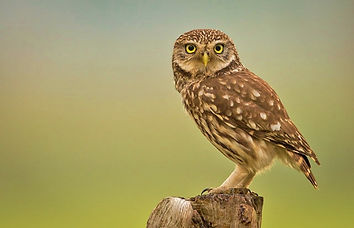
Little Owls can be seen sitting on fence posts and old logs or cut down trees , using these as a vantage point for observing their surroundings.
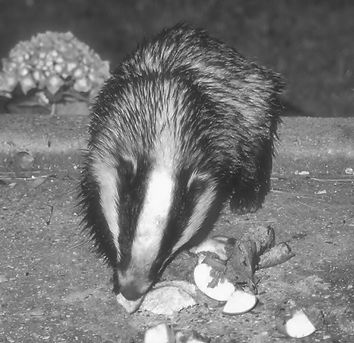.jpg)
There are many Badger setts within many of the woods mentioned on the right hand side of this page. Badgers normally come out at dusk to hunt for food like beetles and worms.

The Purple Emperor butterfly has been recorded in many of the smaller woods in the area known as the Forest of Bere. The larger main woods where it has been seen are Creech Wood, Gull Coppice in Botley Wood, Ampfield Wood, Silford Copse, Cranbury Park, West Walk,The Holt Stein Wood, Havant Thicket and Staunton Country Park.
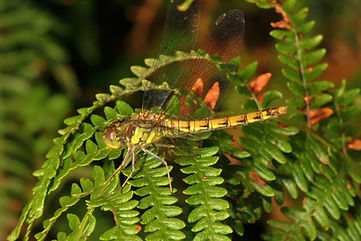
Many of the streams, rivers and ponds dotted around the Forest of Bere are breeding grounds for dragonflies and damselflies.
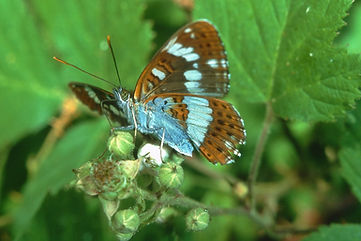
White Admiral butterfly feeding on Bramble, these butterflies can be quite common some years in rides, especially where there are electricity pylons and Bramble grows underneath.

Today, the Forest of Bere covers an area of approximately one hundred square miles. It is bounded to the north by the South Downs, to the south (primarily) by coastal towns, such as Portsmouth and Fareham, and stretches from Eastleigh in the west to the Sussex border.
Its landscape has a patchwork of woods and fields with ancient hedgerows and narrow winding lanes, interspersed with villages and small towns full of character. The area is easily accessible from nearby urban areas, but few of their inhabitants are aware of the Forest and what it has to offer.
In the 13th and 14th centuries, two royal forests formed a greater forerunner of the later vestigial forest between the New Forest and the Sussex border. North of Southampton between the rivers Test and Itchen was the Royal Forest of Bere Ashley. North of Portsmouth between the River Meon and the suburb of Bedhampton was the Royal Forest of Bere Portchester.
Woodland habitats and contiguous Country Parks
Listed from east to west, excluding small copses and coppices
-
Southleigh Forest
-
The Holt with Stein Wood and Havant Thicket
-
Bells Copse
-
Outhills Copse with Stakehills Coppice and Beech Wood
-
Bushy Lease with Neville's Park and Littlepark Wood
-
The Queen's Inclosure in Waterlooville
-
Newlandsmoor Coppice with Malin's Coppice, Drivett's Coppice, Portland Coppice, Potwall Coppice, Broomground Coppice and Greathunt Coppice
-
Dunsland Coppice with Wards Coppice and Fareham Garden (wood adjoining above group)
-
Sawyer's Wood
-
Creech Woods
-
Place Wood
-
Mitchelland Copse
-
Stroud Coppice
-
Hipley Copse
-
Waltonheath Plantation with Ashlands Plantation and Staplecross Copse
-
Goathouse Copse with Russell Copse and Kiln Wood
-
Grub Coppice with Mill Coppice
-
West Walk (one of the largest woods) (with Lowerfield Copse and Upperfield Copse)
-
Dirty Copse with Great Holywell Copse
-
Mill Copse with Hoegate Commons, The Purlieu and Huntbourn Wood
-
Orchard Copse with Birching Copse
-
Close Wood and Bishop's Wood
-
Shaftesbury Copse, Aylesbury Copse with Ravens Wood, Birchfield Copse, Dash Wood, Dandy Copse and Fiddlers Green
-
Mushes Coppice with Everitts Coppice, Stonyfield Copse, Flagpond Copse, Sager's Moor, Dimmock's Moor, Ridge Copse, Blackmoor Copse, Waterclose Copse and Sawpit Copse
-
Brook Wood with Horse Wood, Hallwood Copse, Mansfield High Wood, Hole Copse and Silford Copse
-
Jacob's Croft, Hangman's Copse, Blacklands Copse, Birch Row, Alder Moor, Maids' Garden Copse and Botley Row (wood that adjoins above group)
-
Gull Coppice and Bushy Land, in Swanwick
-
Wellspring Copse with Swanwick Wood
-
Manor Farm Country Park with Dock Copse, Catiland Copse, Vantage Copse and Durncombe's Copse
-
Netley Common with Dumbleton's Copse
-
Telegraph Woods with Beacon Hill Woodland Park
-
Hog Wood with Milkmeads Copse, Vocus Copse, High Wood and/in Itchen Valley Country Park
-
Home Wood with Smithys Wood, Cox's Rough, Hut Wood, Marshall's Rows, Spring Copse and Chilworth Common
-
Otterbourne Park Wood and Pitmore Copse
-
Home Copse, Long Copse and Rownhams Plantation
-
The woods that cover most of Cranbury Park
-
Windmill Copse
-
Hocombe Plantation with Trodds Copse
-
Broadgate Plantation
-
Ampfield Wood with Neville's Copse, Amprield Plantation and Hursley Forest
Wildlife
The Forest of Bere has a wealth of wildlife, so much so they could not possibly all mentioned here, but with such diverse habitat, dominated by woodland and field margins, the wildlife you are most likely to see in the early morning in spring would be possibly Roe Deer, or Fallow deer, or the call of a Muntjac deer in the distance. The Forest of Bere has many streams that meander through the landscape, which would harbour many fish like Brown Trout and bird life like Kingfisher, Dipper and Wagtails.
Also the Otter may well be seen in some of the larger river tributaries that meet the major rivers, also Mink may well be observed. Flying fast and low over the silvery sheen of many of the rivers, Dragonflies and Damselflies can be seen and other invertebrates are on the wing, with a wealth of flora coming into flower in the meadows and beside the river banks, in the warmth of the summer months. Bird life seen hovering or flying on updrafts could be Red Kite and Buzzard along with other birds of prey especially the Little Owl, Barn Owl at dusk and Tawny Owls at night.
Some of the areas in and around the network of woodlands the grassland is turning to heath and possibly the Nightjar may well be seen at dusk. Many Butterflies and moths will be observed, in the field margins and meadows, where there is a good concentration of wildflowers like Ox-eye daisy and Thistles, and many Orchids can be seen on the chalky soils in the South Downs National park. In some of the bigger woods the biggest butterfly in the south of England can be observed, is the magnificent Purple Emperor with some patience as it is an arboreal butterfly also in the Oak woods other butterflies like the White Admiral, Silver-Washed Fritillary and Purple Hairstreak, are often observed in the height of the summer, June, July and into August. Walking along the network of small B and C roads there are many Blackthorn hedges, and there has been sightings of the elusive female Brown Hairstreak butterfly, laying her eggs on small Blackthorn twigs. It's worth looking for the white oval eggs, in the winter after the Blackthorn leaves have fallen off, these eggs are no bigger than a pinhead, so a keen eye would be needed!

Female Brown Hairstreak laying her eggs on a Blackthorn twig.

Many of the roads are little more than country lanes, and havent changed in character for decades which gives this area such charm, and a wealth of undisturbed habitat for a lot of wildlife.
Havant Thicket.

Fallow deer can be seen in some of the forests but are very secretive

Roe deer are the most common species of Deer in the UK and can be quite common in some woods,venturing out into the surrounding field margins where they can be observed from a distance.
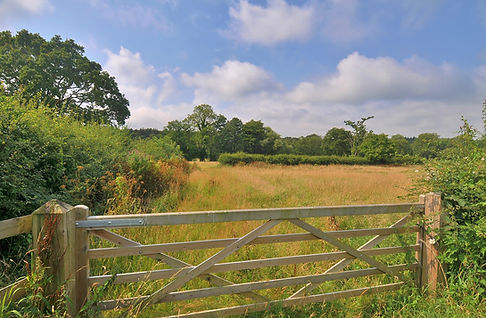
A lot of the land in and around the Forest of Bere is owned by the Southwick estate and is Private.